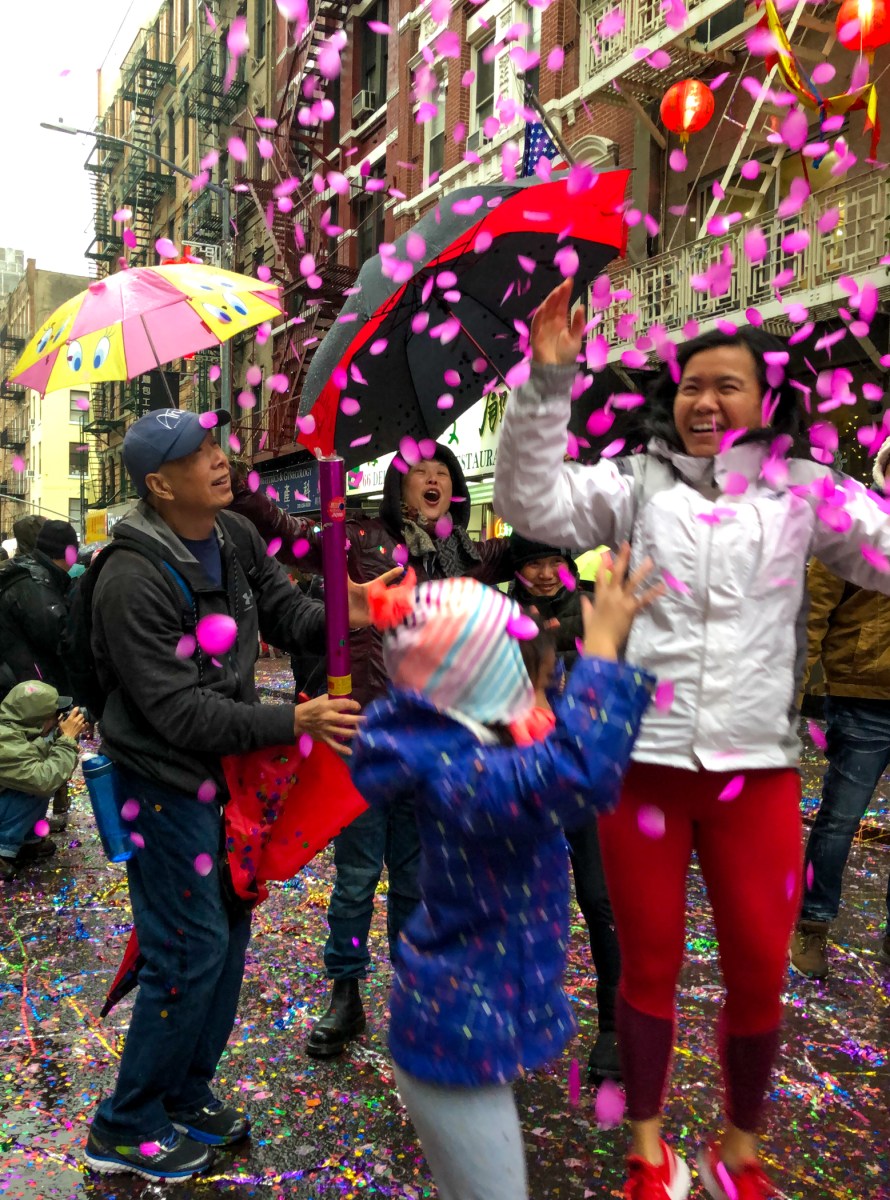BY TEQUILA MINSKY
Brilliant red floods the streetscape of Chinatown. Red is the color for happiness, beauty, vitality, good luck, success and prosperity.
Under shop awnings, scarlet paper lanterns sway in the breeze while messages of good fortune line window storefronts — the Chinese New Year is everywhere. This year is The Year of the Rat—the first in the astrological cycle of Chinese New Years, which is celebrated for two weeks.
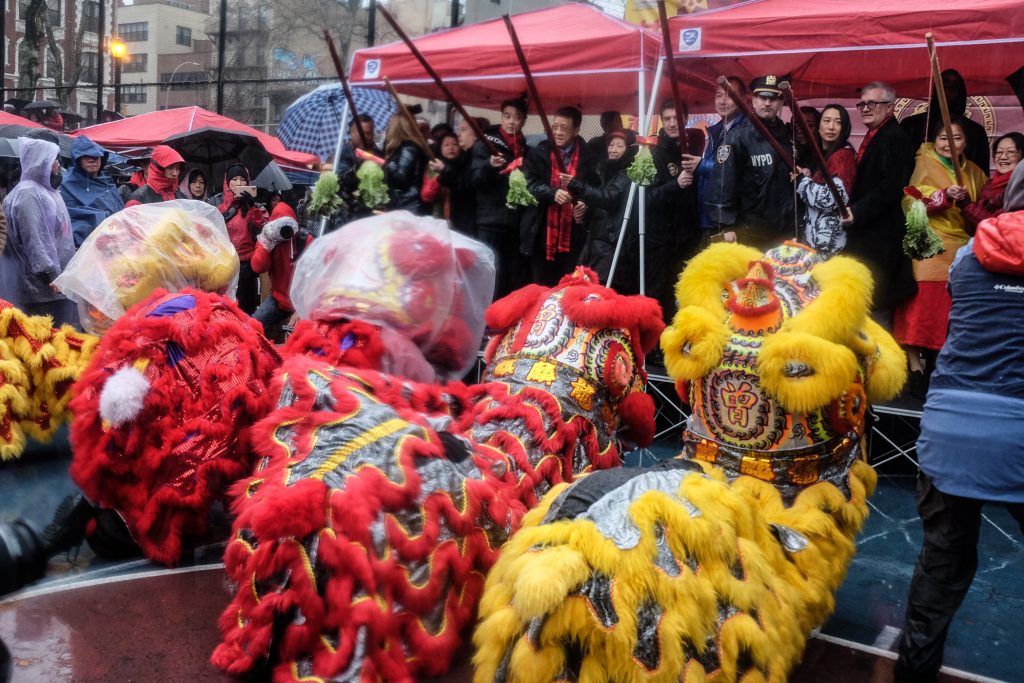
In spite of the Saturday rain on New Year’s Day as well as the devastating fire of a historic community building with the Chinatown archives, the Lunar New Year entered on Jan. 25 with its traditional firecracker ceremony at Sara D. Roosevelt Park.
Sheltered by a tent, active community members and local politicians wished everybody well, and during the constant shower, presented proclamations in a sped-up ceremony.
Then, holding long poles with lettuce dangling, VIPs enticed and fed the dancing dragons, and firecrackers scared bad luck away, welcoming the New Year. An FDNY explosive expert was on hand among the firecracker professionals.

Meanwhile in the park, two firefighters tabled with FDNY recruitment info. Chinatown-raised Danny Wong (Truck & Ladder 114, Sunset Park) described eating his family’s mouth-watering New Year’s Eve meal.
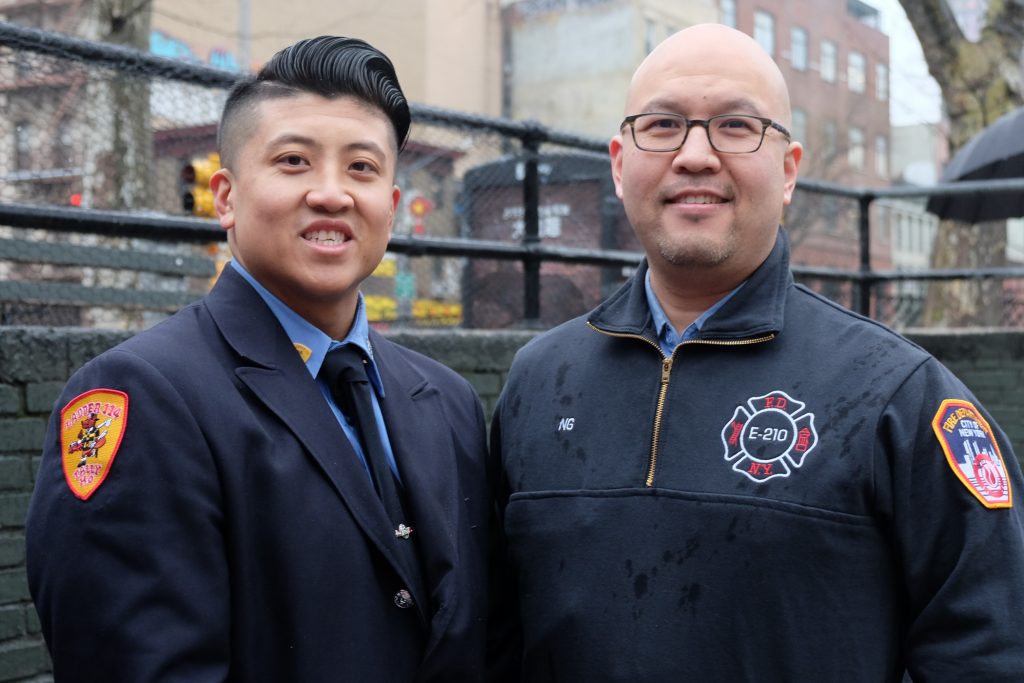
“My mother-in-law did the cooking,” he said, listing garlic crab with rice, vermicelli, chicken, abalone, lobster, shrimp and pork as part of the meal that the extended family of 15 ate. Some families eat their big meal on New Year’s Eve.
For some families, New Year’s Day is a vegetarian meal. But for all, Chinese New Year is a time when the family gets together and eats.
One young man who works at the Apple Store said that his family will take up three large round tables in a Chinese restaurant in Brooklyn. “We don’t have a home big enough to accommodate our whole family,” he said.
One woman spoke from the locker room at the Parks Dept. Dapolito Center as she looked forward to eating with five other family members in her apartment. Her New Year’s dinner menu would include soup with a whole chicken and lots of vegetables—all home made, accompanied by prepared duck that she would buy.
New Year’s is a time of new beginnings, a clean slate. People get haircuts before the holiday, as did firefighter Danny Wong. All cleaning must be completed before the holiday and on New Year’s Day only good things can be said, nothing bad. One must be positive.
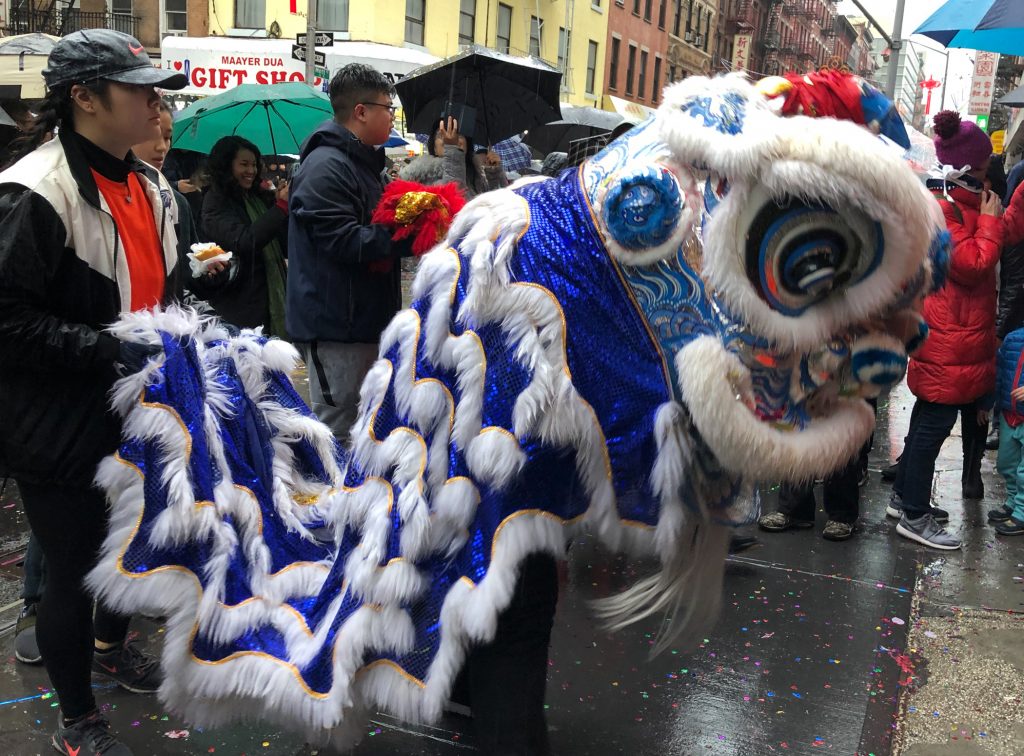
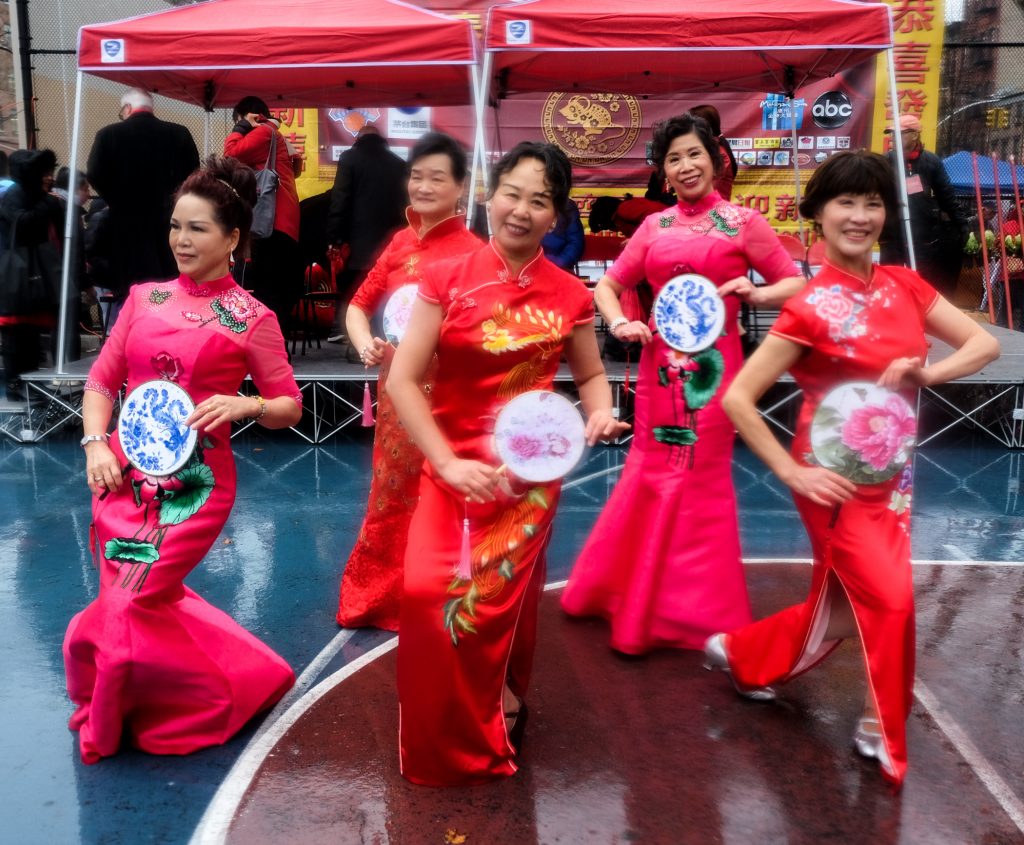
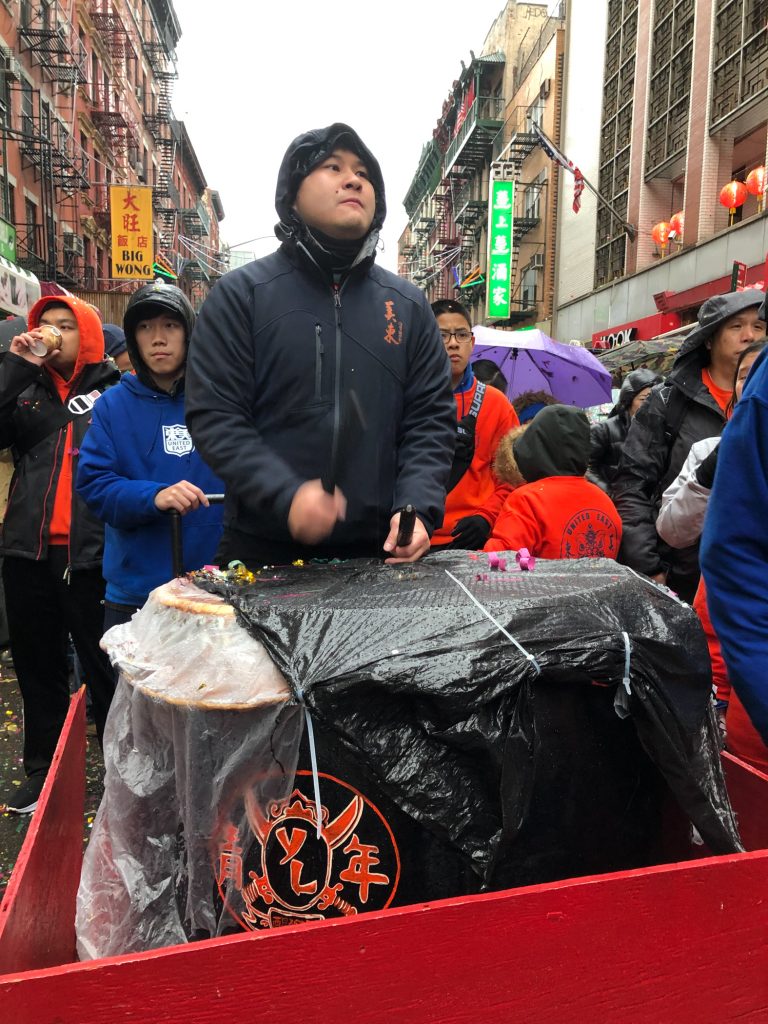
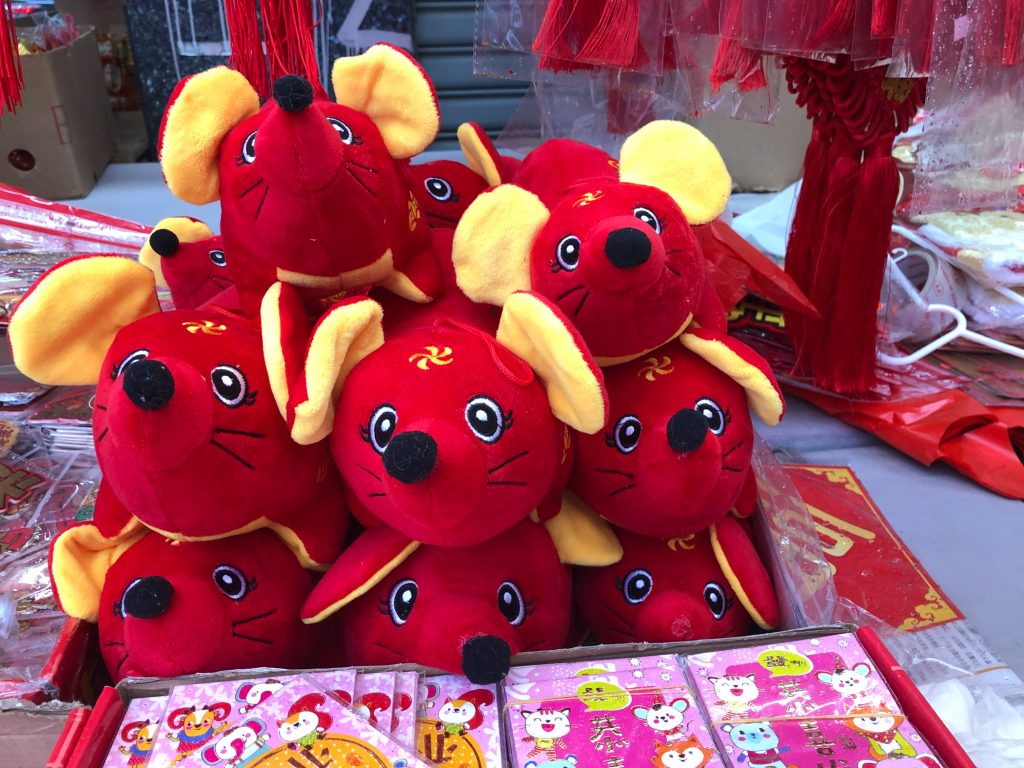
Meanwhile, along with the non-stop eating for that young man at the Apple store, he looks forward to receiving those traditional money-filled red envelopes.
The red envelopes, known as “lucky money,” “New Year’s money,” or “money to anchor the year,” are given by adults and married people to children and single people. The money, in a red envelope, can be a token amount of a few dollars or a more substantial gift. How much does that young man receive? “Sometimes, $600,” he revealed.
New Year’s is also a time to pay respects to the ancestors.
Council Member Margaret Chin grew up in Chinatown and shared remembrances. “My mother would make dumplings filled with peanut butter and sugar,” she recalled. “And we always got a new outfit. I have to get something new,” she said, a few days before the holiday.
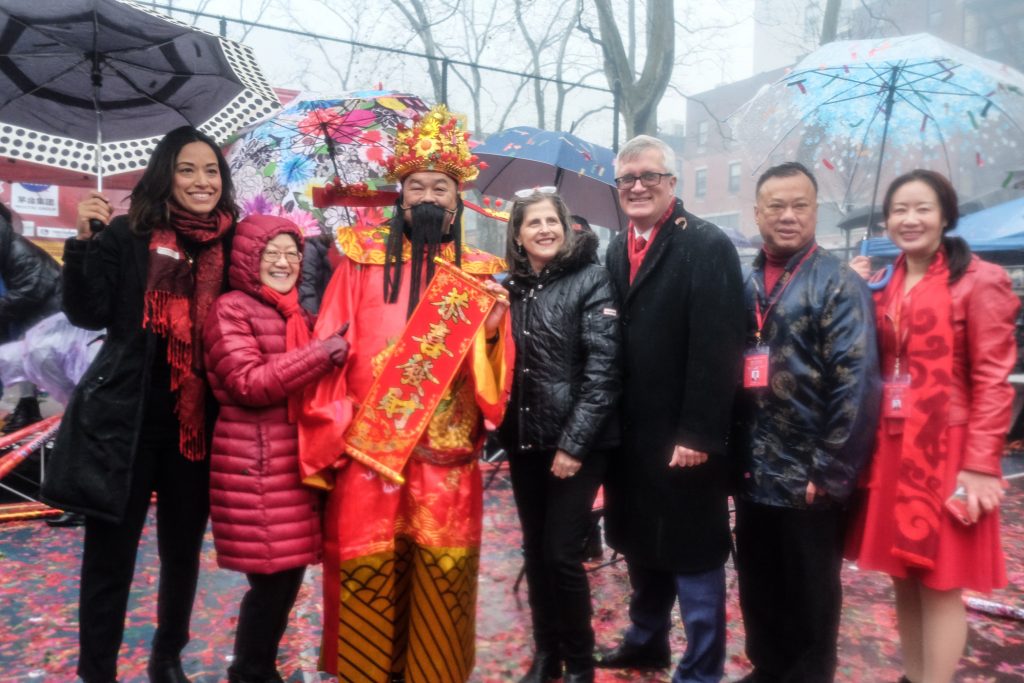
Years back, Council Member Chin presented Intro 1061, a local law to amend the City’s administrative code in relation to the sale of plants and flowers during the Asian Lunar New Year so in the weeks prior to the holiday street vendors could sell flowers.
Chin also mentioned how Chinese business associations and other groups continue to hold Chinese New Years’ banquets into April.
Representing Chinatown, Chin has been very occupied since the five-alarm fire at 70 Mulberry and Bayard, concerned, as are all community members. The Museum of Chinese in America (MOCA) housed its archives, 85,000 curated items, some from the 19th century in that building. Nancy Yao Maasbach, the heart-broken president of the Museum, told the New York Times that most of the collection was probably lost due to water damage.
New Years marks the end of the coldest days in China and while it’s still wintry, the holiday also known as the Spring Festival is originally a ceremonial day to pray to gods for a good planting and harvest season. It is also celebrated in other Asian countries.
In China, the holiday is sometimes referred to as the “Spring Migration” — the family reunion being the most important part of the holiday when everyone returns home for the New Year’s Eve dinner.
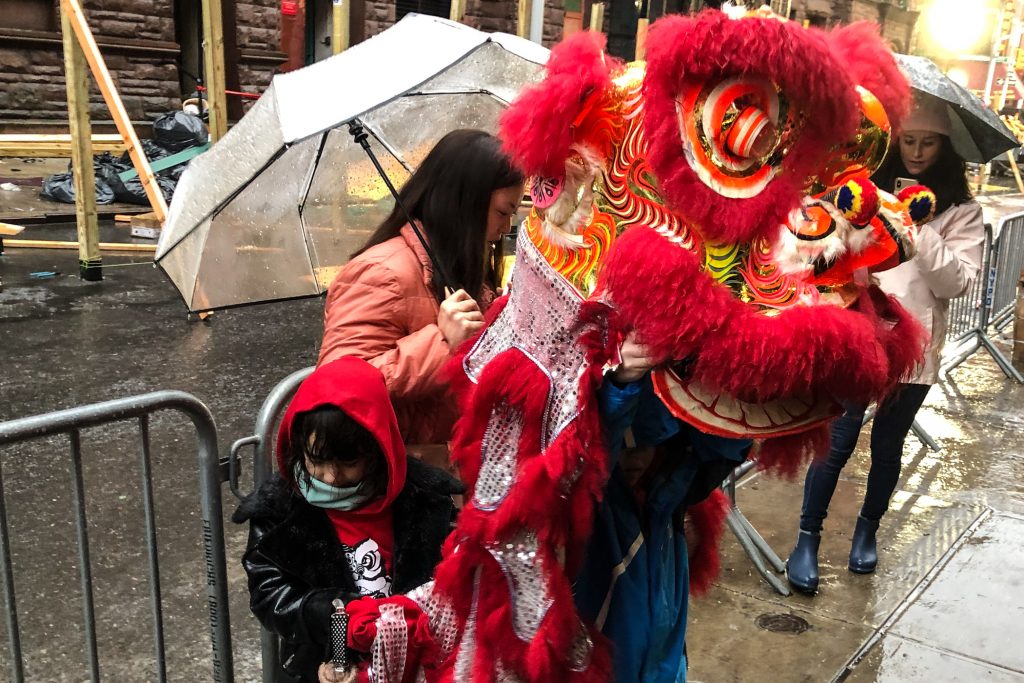
It’s not all that different in New York City where, with much anticipation and preparation, Chinese New Yorkers in great anticipation look forward to the holiday and the family coming together.
This year, however, in China, with the outbreak of the coronavirus, travel is restricted within the country, and much of typical travel traditions have been curtailed.
And, if you want to be part of the fun? For the family at the Museum of Chinese in America, enjoy crafts and dance performances, snacks, and tales inspired by Chinese and Chinese American New Years. The ticketed sessions are at 10 a.m. or 2 p.m. on February 1.
February 8, the Lion Dance will take place throughout Chinatown from 10:30 a.m. on.
And on February 9, raucous symbols, drums, poppers spraying confetti, multi-colored costumes and giant dragons will delight crowds during the Chinatown Lunar New Year Parade and Festival starting at 1 p.m. The route goes from Mott and Hester to Chatham Square to East Broadway towards the Manhattan Bridge, completing on Eldridge and Forsyth Streets towards Grand Street next to Sara D. Roosevelt Park.



